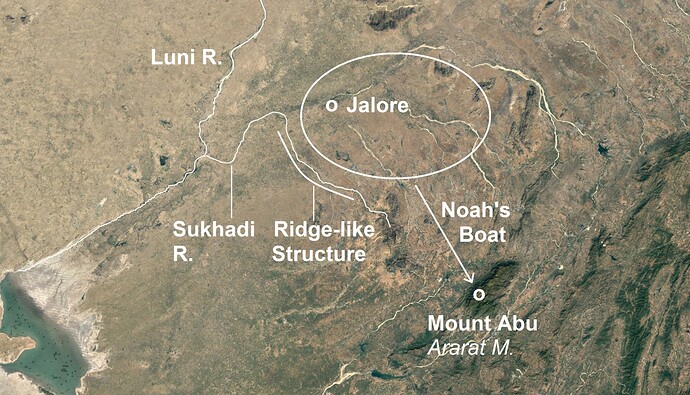Indeed, there would be many places where there may have taken place a local flood at c. 3000 BCE. However, this particular place is important because it fits into the larger picture that I give briefly below (along with the contrast with West Asia).
EDEN-ADAM.
Geography: Indus: Four rivers flow from Pushkar. W Asia: No four rivers.
Archaeology: Indus: Pushkar inhabited from pre-historic times. W Asia: Lake Van uninhabited. Qurnah habited.
Traditions: Indus: Temple of Brahma-the-creator located here. W Asia: No living tradition at Lake Van or Qurnah.
FLOOD-NOAH.
Geography: Indus: Bowl-like geological formation with rain waters staying put. W Asia: Sumer was well-drained.
Archaeology: Indus: Floods begin at 5000 BP. W Asia: Flood are recurrent. Archaeological evidence is available.
Traditions: Indus: The Meena Community in South Rajasthan believes they are descendants of Vaivaswat Manu (the Indian name of Noah). W Asia: None.
CHALDEA-ABRAHAM
Geography: Indus: Two rivers are Yamuna and Ghaggar. W Asia: No two rivers near Ur Chaldea.
Archaeology: Indus: Harappan Civilization. W Asia: Sumeric Civilization.
Traditions: Indus: Rama is parallel to Abraham, wife of both sent to the palace of the king, for example. W Asia: No parallel tale.
EXODUS-MOSES
Geography: Indus: Mud volcano could have blocked the flow of the Indus River. Taftan volcano lies on the route from Indus Valley to Israel. W Asia: No volcano in Sinai.
Archaeology: Indus: End of the Indus Civilization. Evidence of baked bricks. W Asia: Sinai has archaeological evidence only of Egyptian people c. 1500 BCE.
Traditions: Indus: Kishna is said to have left for an unknown country. W Asia: No figure parallel to Moses in Egypt.
The case for Exodus from the Indus Valley does not stand on any one standalone parallel such as the Flood at 3000 BCE that may be found at a number of places. . Rather it stands on continuity of geographical and archaeological evidences and parallel persons in the tradition.
